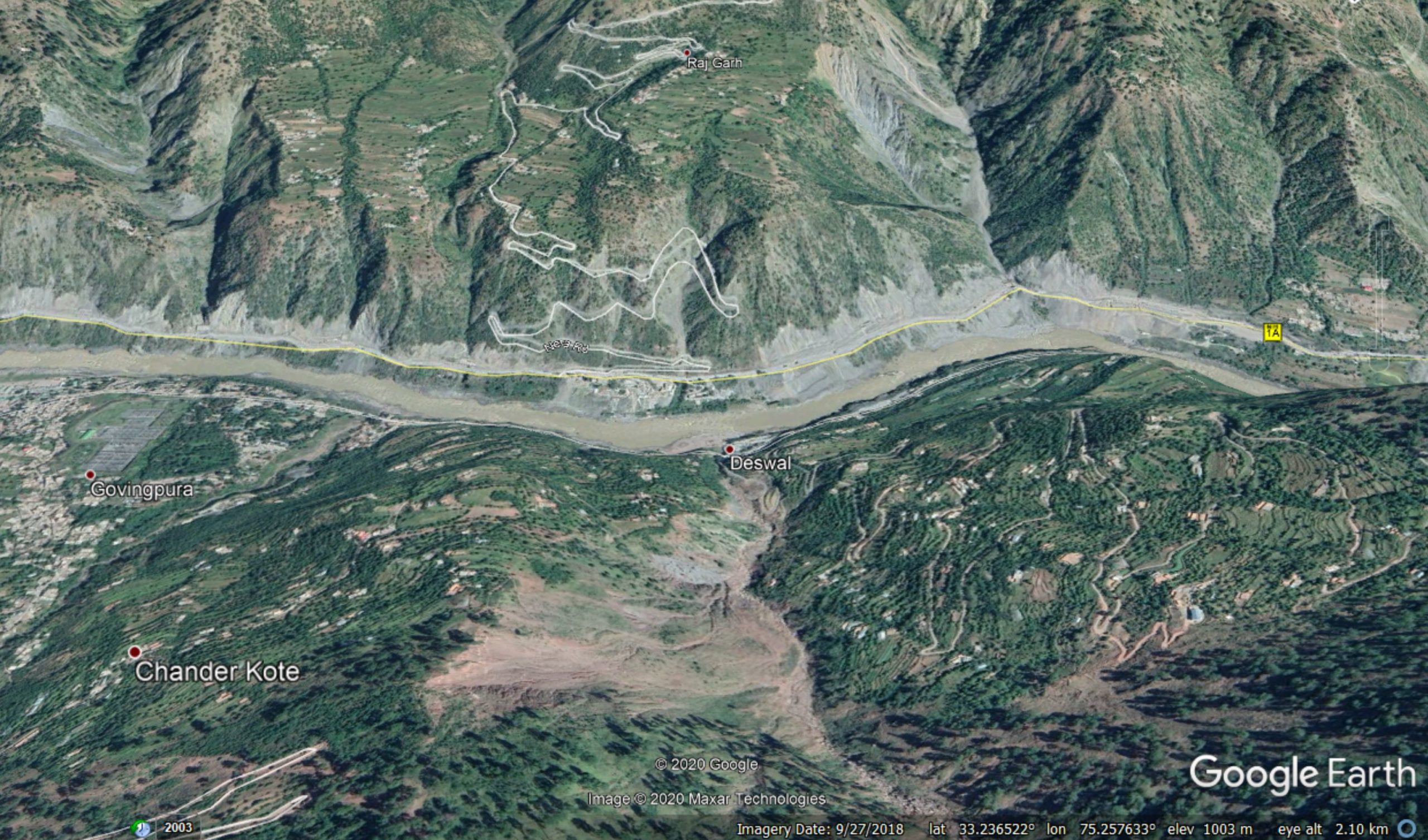6 May 2020
The Srinagar-Jammu National Highway:- India’s “killer highway”
Posted by Dave Petley
The Srinagar-Jammu National Highway:- India’s “killer highway”
DW has a very nice article online about the Srinagar-Jammu National Highway, the main transportation route into the mountainous area of Kashmir in the northwest of India. This 270 km long road, which passes through steep, unstable terrain, regularly appears in my landslide fatality database, especially in the months of the summer monsoon. The article notes that the rate of deaths on this road is extraordinarily high, surpassing that of the oft-reported conflict in Kashmir:
In 2019, for instance, violence in the Kashmir valley killed 366 people, whereas accidents on the highway claimed at least 447 lives. “There were at least 252 deaths in and around Udhampur on the northern belt of the road and 195 on the southern belt of Ramban,” said Liaqat Ahmad, a traffic official working in the Kashmir Valley.
There are a variety of reasons for these losses of course, not least road traffic accidents, which are a dreadful problem in South Asia. But landslides are a major cause of loss. The scale of the problems on this road can be seen on the Google Earth imagery of the area:-

Google Earth imagery of landslides on the Jammu-Srinagar National Highway in the vicinity of Ramban.
.
This image lies just to the west of Ramban, one of the most hazardous part of the Srinagar-Jammu National Highway – this image is at 33.237, 75.258. This is a landscape with many naturally occurring landslides, but the image also shows how poor road engineering and maintenance has destabilised the slopes.
There may be something more subtle here too though. Is the valley following a fault? If so, we would expect to see a higher incidence of landslides than in the surrounding terrain. There are hints in the image that this might be the case. The road is certainly very close to the major fault systems that mark the southern edge of the Himalayan tectonic collision.
A major shallow earthquake in this area, similar to that of the 2005 Kashmir earthquake in Pakistan, would lead to catastrophic landsliding along this road.
.
On reflection 1: Day 3 of the EGU General Assembly
There are two good online sessions at the EGU General Assembly today, with a superstar set of convenors:
Displays Chat Wed, 06 May, 08:30–12:30
Unfortunately my day job, especially in the time of the virus, makes it hard for me to join these sessions.
.
On reflection 2: The depressing toll of landslides related to mining continues to increase
Depressing news overnight from Liberia, with reports of substantial mining-related landslides. Xinhua reports at least 45 deaths in a mudslide at a goldmine in Grand Cape Mount County on 5 May 2020. Front Page Africa indicates that the toll might be as high as 60 people. Meanwhile, a landslide at a mine in El Callao Municipality in Venezuela on 2 May 2020 killed eight people.


 Dave Petley is the Vice-Chancellor of the University of Hull in the United Kingdom. His blog provides commentary and analysis of landslide events occurring worldwide, including the landslides themselves, latest research, and conferences and meetings.
Dave Petley is the Vice-Chancellor of the University of Hull in the United Kingdom. His blog provides commentary and analysis of landslide events occurring worldwide, including the landslides themselves, latest research, and conferences and meetings.